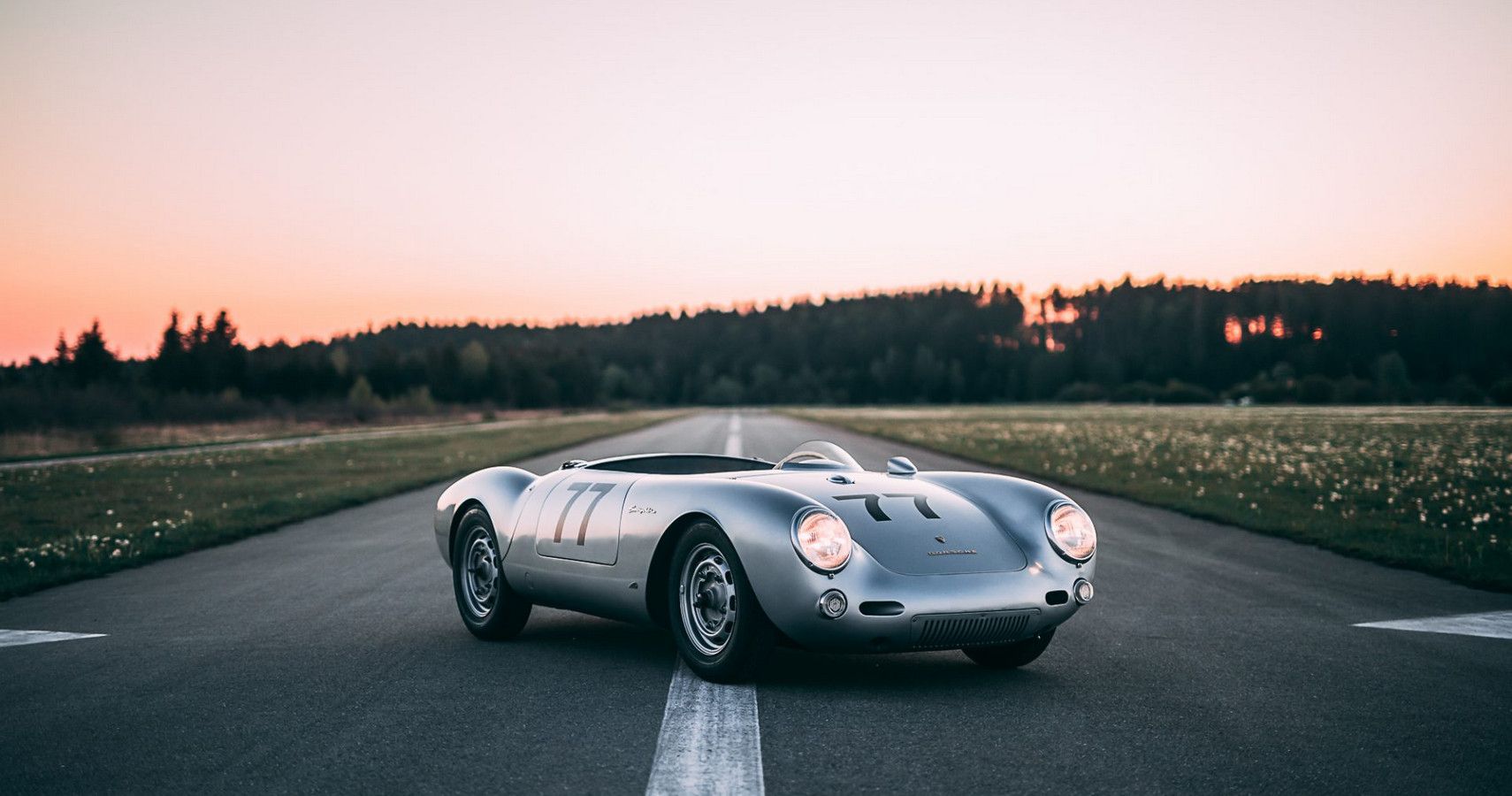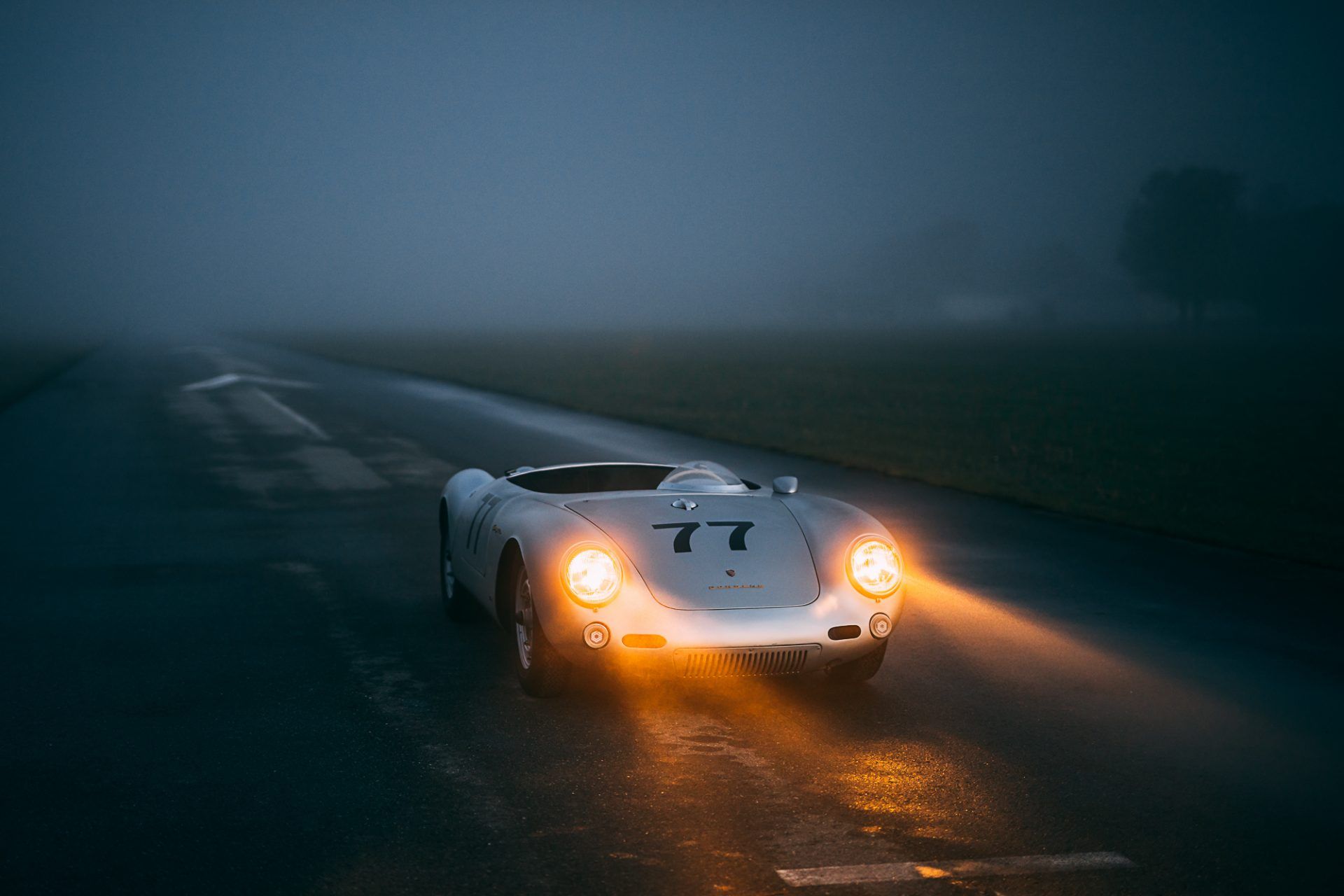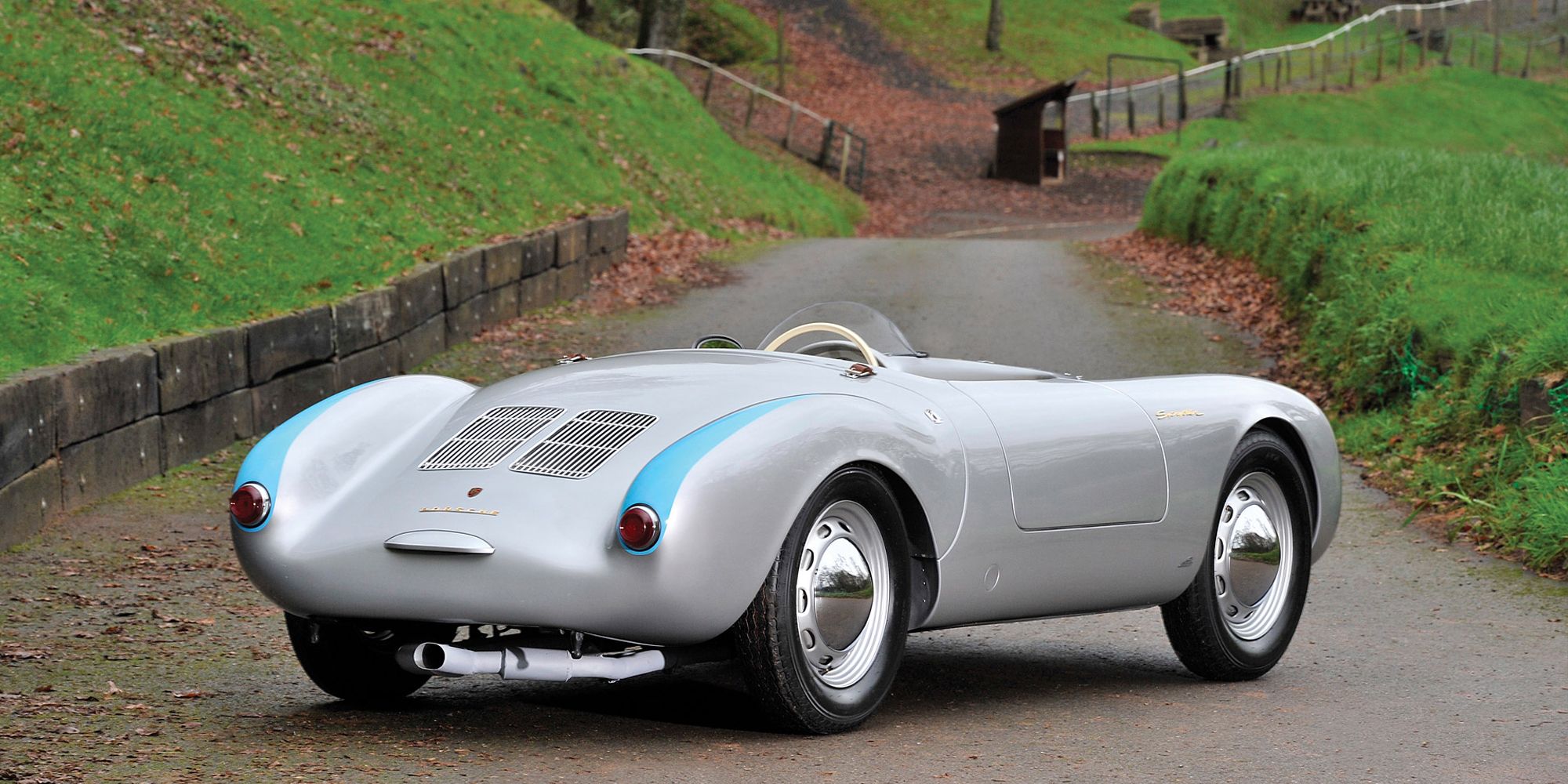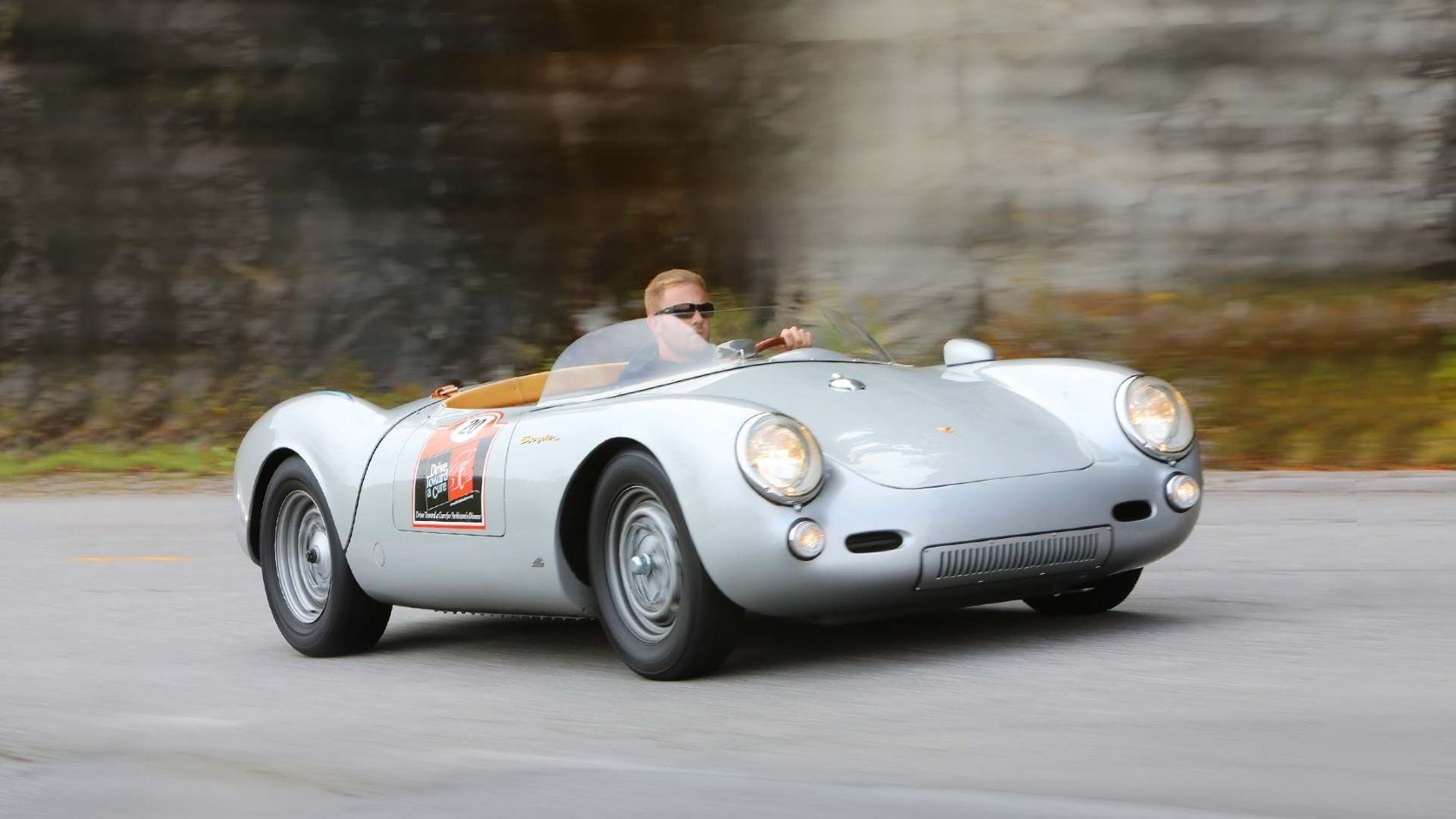Although it was only produced for three short years, with only 90 units built during this time, the Porsche 550 Spyder remains one of the marque's most sought-after models. Additionally, the 550 has stood the test of time to become one of the most desirable cars on the classic market. Few survive today, and they rarely change hands, but when they do, these cars call for a king's ransom, just for the privilege of owning one of the most iconic models from Porsche's early history.
The 550 Spyder is a testament to the brand's image, having helped to establish Porsche as a force to be reckoned with on the global racing front. Despite its absurdly small size and seemingly minimal displacement, the Porsche 550 Spyder easily held its own against the likes of Ferrari, Maserati, Jaguar, and other titans of the 1950s sports car racing scene.
The Porsche 550 Spyder Was Actually Born Outside Its Parent Company
The Porsche 550 Spyder had some rather humble origins, as its basis was originally conceived outside the factory. Its roots can be traced to 1951, when German privateer racer Walter Glöckler began constructing a series of homegrown racing cars, based on existing Porsche components. It should be noted that Glöckler was the first person to ever race a Porsche, and also the first to conduct serious modifications to a Porsche in order to obtain victory on the racetrack. Glöckler had constructed a small batch of his own Porsche-based racing cars and achieved success. Some interesting modifications included mounting the engine midship, as opposed to the rear-engined layout of Porsche's factory cars. Furthermore, Glöckler had experimented with the idea of utilizing a tubular chassis for increased rigidity and better handling.
Not long after Walter Glöckler began winning races with his creations, Porsche took notice and consequently partnered with Glöckler to develop what would become the 550 Spyder. These cars were intended strictly for racing, as opposed to Porsche's 356. As a result, the 550 Spyder featured virtually no creature comforts whatsoever, in order to keep its weight down and maximize the overall power-to-weight ratio. A total of 13 prototypes were then produced by Porsche in conjunction with Glöckler. By 1953, the 550 was ready for its first official competition, the Nürburgring Eifel Races, where it was piloted by Helm Glöckler. Despite carburetor issues brought forth by wet weather, the Porsche 550 Spyder achieved victory at the very first race in which it'd been entered.
Despite Its Small Engine, The Porsche 550 Spyder Could Still Run With The Pack
After its initial win, victory followed the Porsche 550 Spyder like a shadow of success. During the early 1950s, Porsche was still relatively in its infancy, and desperately needed to prove their worth in order to attract potential buyers. Several changes had been made to Glöckler's original plans, although the midship platform was kept. Twin Solex downdraft carburetors were utilized, as well as an externally-mounted oil cooler to further aid the wet-sump lubrication layout. Alloy bodywork by Weidenhausen of Frankfurt was then draped over the cars' tubular steel chassis.
Following the victory at the Nürburgring in 1953, Porsche turned their sights to Le Mans, fielding a pair of coupe-bodied cars to improve aerodynamics down the Mulsanne straight. Despite interior ventilation issues and a serious lack of driver comfort, Porsche achieved a class victory at the 24-hour race. Later that same year, the Porsche 550 Spyder would go on to win the Mexican Carrera Panamericana. Due to this triumph, performance-oriented models from Porsche would go on to receive the Carrera badge, which is a tradition that continues to this day.
In the following years, the Porsche would undergo several improvements. A key example of which is the Type 547 engine, designed by Ernst Fuhrmann to help the 550 Spyder remain within the 1500cc class, but while still being competitive. This engine was immensely complex and featured a total of four overhead camshafts. A total of 120 hours were required to assemble each unit, and timing adjustment would take anywhere from 8 to 15 hours.
All of these improvements would pay off, as the reworked 550 Spyders would go on to take on countless victories. One notable example is the 1956 Targa Florio, a Sicilian race held on 581 miles of public roads. There, the 550 Spyder tussled with the likes of Ferrari and Jaguar; two racing superpowers which had fielded cars with nearly twice the displacement of the Porsche 550's 1498cc engine. Nonetheless, thanks to the Spyder's feathery weight and its ability to carry its speed through corners, the 550 achieved an overall victory.
Why The Porsche 550 Spyder Stands The Test Of Time
Nearly 70 years have passed since its inception, but the Porsche 550 Spyder remains one of the most celebrated and legendary cars to ever receive the Porsche badge. Throughout its brief production run from 1953-1957, only 90 units were ever produced, and even fewer survive today. Its rich racing pedigree and overall rarity command a staggering cost, with one example recently selling for $3.7 million.
Further intrigue adds to its legendary status, including the car's connection with James Dean. Not to mention a curious incident during the 1954 Mille Miglia, when racer Hans Hermann was forced to drive his 550 underneath a closed railway crossing to dodge a speeding train, which also allowed both him and the co-driver Herbert Linge to win their class and place 6th overall during that very same race.
In addition, the 550 Spyder paved the way for the droves of purpose-built racing cars that helped establish Porsche, not just as a constructor of passenger cars, but also as a global motorsport superpower. These factors, as well as countless others, are the reasons why the Porsche 550 Spyder remains a true legend among even the most formidable of classic racing cars.




